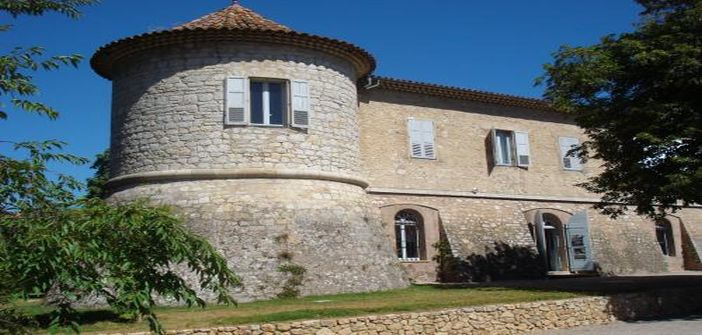In the 11th century, two villages are found, bathed by the Mourachonne: Castrum Sartolis and Castrum Morsanis. As in many places in this region, the two communities are deserted after 1350 due to incessant Saracen invasions and especially an epidemic of plague.
These two villages would be repopulated a century and a half later, in 1496, by families from Liguria. Their history is common, with the fiefdom shared among several lords including the Bar-Grasse and the Villeneuve. The two towns were united by an imperial decree on March 28, 1858.
Mouans Sartoux (for convenience, we will use this term) is built around its 15th-century castle. This triangular-shaped building remained the property of the De Grasse family until 1750, then became the property of the Villeneuve; it suffered damage during the revolution.
Today, the castle is a contemporary art space. In the old stables, a museum tells us about life in the past, with activities, tools, and a reconstructed bedroom from the late 19th century. The church dedicated to Saint Andrew was built by Pierre De Grasse at the end of the 15th century, and its bell tower dates from 1760. Despite several streams and the nearby Siagne, Mouans Sartoux was severely lacking in water. The first fountain appeared in 1873 on the church square, followed by others including a washhouse.
The town hall was built after the merger of the two villages in 1859. Progress came with the railway at the end of the Second Empire. In addition to agricultural activities such as olives, vines, and flowers, Mouans Sartoux also had silk farms and silkworm breeding. A cadastral map from 1738 notes the presence of mulberry trees in the Grande Pièce neighborhood. This activity ceased after World War II.
The Saint Bernardin Chapel of the White Penitents, with its magnificent portal, is set back from the Cannes Avenue near the washhouse. It is now a private property. Lime kilns were located at what is now Place du Général Leclerc, closed in 1861; the space was used for drying grains.
On another square, the Grand Pré (now General De Gaulle), wheat was threshed. Mouans Sartoux is especially known for its book festival.
This village, with its old houses, is also appreciated by gastronomes for its many restaurants.
Thierry Jan


